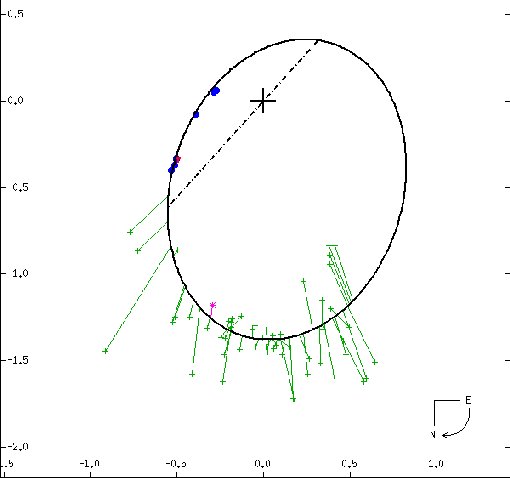
 |
Slightly fainter Beta Phoenicis B is plotted as if it goes about Beta Phe A (at the cross). Actually, the two go about a common center of mass that lies almost exactly mid-way between them. On a 168-year, highly elliptical orbit (e=0.72) that is tilted by 34 degrees to the plane of the sky, "B" was last closest to "A" in mid-2003. The scale is in seconds of arc: note how close the stars are to each other. As seen here, Beta Phe B orbits in the counterclockwise direction: look at how much more accurate the later observations are. (From W. I. Hartkopf and B. D. Mason, Sixth Catalog of Orbits of Visual Binary Stars, US Naval Observatory Double Star Catalog, 2006.) |